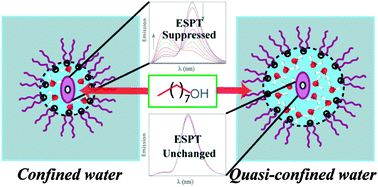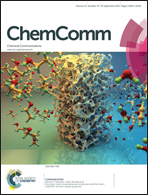The strikingly different miscibility of n-octanol in highly-confined and quasi-confined water†
Abstract
n-Octanol, normally a water-immiscible alcohol, is found to be significantly miscible with highly-confined water, but immiscible with quasi-confined water within the water pool of a reverse micelle as revealed by fluorescence modulation of an excited state proton transfer (ESPT) probe, 8-hydroxypyrene-1,3,6-trisulfonate (HPTS), internalized in the core. Dynamic light scattering (DLS) measurements show a very different pattern of size alteration of the reverse micelle upon octanol addition depending on the initial state of the encapsulating water (confined vs. quasi-confined) indicating different types of partitioning of octanol in the two cases.


 Please wait while we load your content...
Please wait while we load your content...